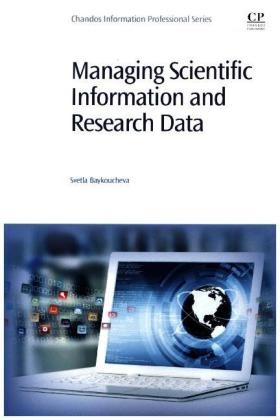Ulteriori informazioni
Informationen zum Autor Svetla Baykoucheva (Baykousheva) is a Chemistry and Life Sciences Librarian at the University of Maryland College Park (USA), where she teaches chemical information. She holds a PhD in Microbiology, BS and MS degrees in Chemistry, and a Master’s in Library and Information Science (MLIS) degree. A postdoctoral fellowship from the International Atomic Energy Agency (IAEA) allowed her to specialise at the University of Paris VI (France) for one year. For more than 20 years she performed interdisciplinary research in infectious microbiology and biochemistry, publishing more than 50 articles in peer-reviewed scientific journals (see her Google Scholar Profile). She has also served as the head of the White Memorial Chemistry Library at the University of Maryland College Park and as manager of the Library and Information Center of the American Chemical Society (ACS) in Washington, D.C. In her role as editor of the Chemical Information Bulletin (published by the ACS Division of Chemical Information), she took numerous interviews from scholars, information experts, editors, and publishers. She previously published Managing Scientific Information and Research Data, also with Elsevier. Klappentext Innovative technologies are changing the way research is performed! preserved! and communicated. Managing Scientific Information and Research Data explores how these technologies are used and provides detailed analysis of the approaches and tools developed to manage scientific information and data. Following an introduction! the book is then divided into 15 chapters discussing the changes in scientific communication; new models of publishing and peer review; ethics in scientific communication; preservation of data; discovery tools; discipline-specific practices of researchers for gathering and using scientific information; academic social networks; bibliographic management tools; information literacy and the information needs of students and researchers; the involvement of academic libraries in eScience and the new opportunities it presents to librarians; and interviews with experts in scientific information and publishing. Inhaltsverzeichnis Chapter 1. The Road from Chemistry-to Microbiology-to Information Science Chapter 2. Scientific communication in the digital age Chapter 3. Ethics in scientific publishing Chapter 4. An editor's view: Interview with John Fourkas Chapter 5. Finding and managing scientific information Chapter 6. Science information literacy and the role of academic librarians Chapter 7. Information literacy and social media: Interview with Chérifa Boukacem-Zeghmouri Chapter 8. Coping with "Big Data": eScience Chapter 9. Managing research data: Electronic Laboratory Notebooks (ELNs) Chapter 10. The complexity of chemical information: Interview with Gary Wiggins Chapter 11. Measuring academic impact Chapter 12. From the Science Citation Index to the Journal Impact Factor and Web of Science: Interview with Eugene Garfield Chapter 13. What it looked like to work at the Institute for Scientific Information (ISI): Interview with Bonnie Lawlor Chapter 14. Measuring attention: Social media and Altmetrics Chapter 15. Unique identifiers Chapter 16. Epilogue: Creating an information-literate generation of scientists...
Sommario
- Chapter 1. The Road from Chemistry-to Microbiology-to Information Science
- Chapter 2. Scientific communication in the digital age
- Chapter 3. Ethics in scientific publishing
- Chapter 4. An editor's view: Interview with John Fourkas
- Chapter 5. Finding and managing scientific information
- Chapter 6. Science information literacy and the role of academic librarians
- Chapter 7. Information literacy and social media: Interview with Chérifa Boukacem-Zeghmouri
- Chapter 8. Coping with "Big Data": eScience
- Chapter 9. Managing research data: Electronic Laboratory Notebooks (ELNs)
- Chapter 10. The complexity of chemical information: Interview with Gary Wiggins
- Chapter 11. Measuring academic impact
- Chapter 12. From the Science Citation Index to the Journal Impact Factor and Web of Science: Interview with Eugene Garfield
- Chapter 13. What it looked like to work at the Institute for Scientific Information (ISI): Interview with Bonnie Lawlor
- Chapter 14. Measuring attention: Social media and Altmetrics
- Chapter 15. Unique identifiers
- Chapter 16. Epilogue: Creating an information-literate generation of scientists

